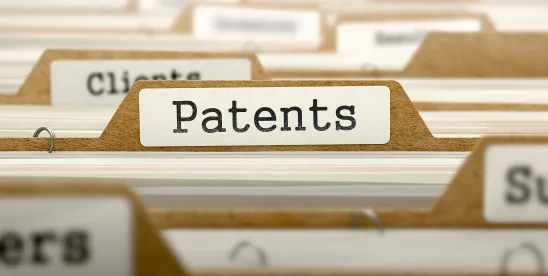This Federal Circuit Opinion analyzed collateral estoppel and the extent to which the non-provisional document would benefit from the provisional application’s priority date, as it relates to Pre-AIA 35 U.S.C. § 102(e).
Background
U.S. Patent Application No. 11/005,678 (“‘678 application”), filed on December 7, 2004 that claims priority to a provisional application filed on July 28, 2000, is directed to logistic systems and methods for transportation of goods that connect and share customer order information between various shippers across different transportation modes. The Examiner rejected the ‘678 application under pre-AIA 35 U.S.C. § 102(e) and 35 U.S.C. § 103. Specifically, claims 1, 2, 8, 10-13, and 24-25 were rejected as anticipated under pre-AIA 35 U.S.C. § 102(e) by U.S. Patent Application Publication No. 2002/0049622 A1 (“Lettich”), which was filed April 26, 2001 and published on April 25, 2002 , and claims 3, 5-7, 9, 15-20, and 22 were rejected as obvious under 35 U.S.C. § 103 over Lettich in view of Karen Rojek’s, How Baxter Improved Data Exports, dated 1998. In addition, Lettich is a non-provisional U.S. patent application that claims priority to provisional application No. 60/200,035, filed on April 27, 2000 (the “Lettich Provisional Application”).
In April 2016, the Patent Trial and Appeal Board (the “Board”) reversed the Examiner’s rejections, finding that Lettich was not prior art under 35 U.S.C. § 102(e). In September 2016, the Examiner filed a Request for Rehearing, alleging that the Board had applied an incorrect version of 35 U.S.C. § 102(e) to determine whether Lettich qualified as prior art. Thereafter, the real party in interest, Odyssey Logistics & Technology Corp., filed a complaint in the U.S. District Court for the Eastern District of Virginia challenging the Request for Rehearing. See Odyssey Logistics & Tech. Corp. v. Iancu, 959 F.3d 1104, 1106–07 (Fed. Cir. 2020). In Odyssey, the Eastern District Court of Virginia disagreed with Odyssey’s argument that “the rehearing proceedings are an ultra vires action by the PTO.” Id. at 1109. The court dismissed Odyssey’s challenge, and the Federal Circuit affirmed.
In the rehearing, the Board agreed with the Examiner’s argument and amended its original decision to find that Lettich was prior art. The Board, referencing MPEP § 2136.03, found that because there was written description support in the Lettich Provisional Application for Lettich’s claim 1 limitations, the entire Lettich specification benefited from the Lettich Provisional Application’s priority date. The Board further found that the subject matter (e.g., paragraphs, figures, and claims) in Lettich that was referenced in the Examiner’s rejection of the ‘678 claims appropriately addressed the ‘678 claim limitations. Accordingly, the Board affirmed the Examiner’s anticipation and obviousness rejections.
The Appellants, the named inventors for the ‘678 application, appealed the Board’s rehearing decision. They raised three distinct issues: (1) whether the Board’s decision to grant the request for rehearing was ultra vires; (2) whether the Board properly afforded Lettich the earlier filing date of its provisional application for purposes of determining that it was prior art under pre-AIA 102(e); and (3) whether substantial evidence supported the Board’s finding as to anticipation and motivation to combine.
Issues
- Are the Appellants estopped from asserting the ultra vires challenge?
- Did the Board properly afford Lettich the earlier filing date of its provisional application for purposes of determining that it was prior art under pre-AIA 102(e)?
- Was there substantial evidence supporting the Board’s finding as to anticipation and motivation to combine?
Holding(s)
- The Appellants are estopped from asserting their ultra vires challenge.
- The Board improperly found that Lettich, in its entirety, benefited from the earlier Lettich Provisional Application filing date.
- The Federal Circuit did not address the substantial evidence issue.
Reasoning
Whether Appellants Were Estopped From Making The Ultra Vires Challenge
The Board argued that the Appellants are estopped from asserting this argument. In assessing the Board’s argument, the Federal Circuit, citing VirnetX Inc. v. Apple Inc., 909 F.3d 1375, 1377 (Fed. Cir. 2018), listed the four elements of collateral estoppel: (1) a prior action presented an identical issue; (2) the prior action actually litigated and adjudged that issue; (3) the judgment in that prior action necessarily required determination of the identical issue; and (4) the prior action featured full representation of the estopped party. Here, the Federal Circuit held the previous decision in Odyssey estopped the Appellants from arguing that the Board acted ultra vires.
Regarding elements (1) and (2), the Federal Circuit in Odyssey rejected Odyssey’s argument that “the rehearing proceedings are an ultra vires action by the PTO,” which was the same argument advanced by the Appellants in this appeal. Regarding element (3), the judgment on the ultra vires issue necessarily required resolution of whether the Board’s actions satisfied the Administrative Procedure Act’s finality requirement, which Odyssey decided. Regarding element (4), the Certificate of Interest for this appeal listed Odyssey as the real party in interest. Because all four elements were satisfied, the Appellants were estopped from asserting the ultra vires challenge.
Whether The Board Properly Afforded Lettich The Earlier Filing Date
The Federal Circuit held that whether Lettich was prior art under pre-AIA 102(e) turned on whether Lettich was entitled to the priority date of the provisional application. The Board and the Examiner interpreted MPEP § 2136.03 in a manner where, if one claim in Lettich were supported by written description in the Lettich Provisional Application, then the entire Lettich publication benefited from the Lettich Provisional Application’s filing date. However, the Federal Circuit rejected this interpretation.
The Federal Circuit held that in order to apply the provisional application’s priority date to a referenced subject matter in a non-provisional document on which an examiner may rely on to reject a claim, a provisional application must provide written description for it. The Federal Circuit held that support for a single claim in a non-provisional document found in a provisional application did not carry the benefit of the provisional application date to the entire non-provisional document, including subject matter that was not supported in the provisional application.
Here, the Federal Circuit affirmed the Board’s claim 1 rejection because the Board found that the referenced subject matter in Lettich was supported by the Lettich Provisional Application. However, this analysis had not been completed for other claims rejected under 35 U.S.C. 102(e). Accordingly, the Federal Circuit vacated the Board’s decision and remanded the case with instructions for the Board to determine if the subject matter in Lettich referenced in rejecting the remaining claims was supported in the Lettich Provisional Application.



 />i
/>i

